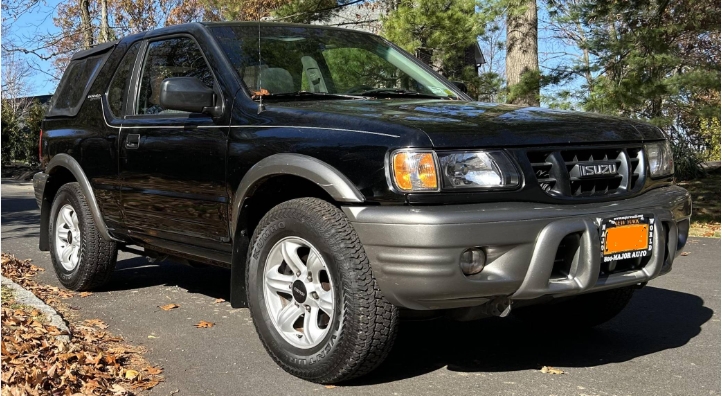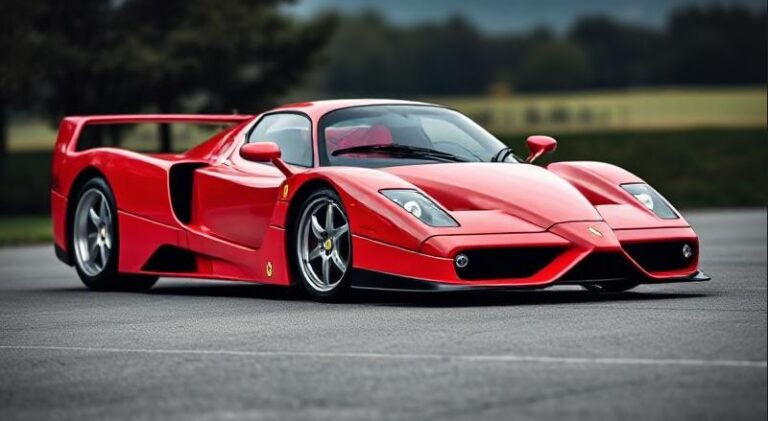The Evolution of the Isuzu Rodeo
The Isuzu Rodeo is a notable name in the landscape of midsize SUVs, renowned for its durability, practicality, and distinctive design. Introduced in the early 1990s, the Rodeo’s evolution reflects shifts in automotive technology, consumer preferences, and market trends. This article provides a detailed chronological overview of the Isuzu Rodeo, including production years, models, and trim levels, illustrating its development from inception to discontinuation.
Origins and Introduction (1991-1997)
First Generation (1991-1997)
The Isuzu Rodeo was first introduced in 1991 for the 1992 model year, marking Isuzu’s entry into the competitive midsize SUV segment. Developed alongside the Honda Passport and the Subaru Outback, the first-generation Rodeo was built on the same platform as the Isuzu Pickup (also known as the Isuzu Hombre in certain markets), emphasizing ruggedness and utility.
Design and Engineering
The first-generation Rodeo featured a traditional body-on-frame construction, emphasizing off-road capability and durability. Its design was boxy and utilitarian, consistent with early 1990s SUV styling. Powertrain options included a 2.6-liter four-cylinder engine producing approximately 130 horsepower, and a 3.2-liter V6 engine delivering around 205 horsepower, paired with a five-speed manual or a four-speed automatic transmission.
Trim Levels and Models
Initially, the lineup was straightforward:
- S Model: Base trim equipped with essential features.
- LS Model: Higher trim with added comfort and convenience features.
Throughout its first generation, the Rodeo maintained a focus on practicality, with options such as four-wheel drive (4WD) and various packages to enhance off-road performance.
Market Positioning
The first-generation Rodeo was marketed as a rugged, reliable SUV suitable for both daily driving and off-road adventures. It was particularly popular in North America, especially among consumers seeking a versatile vehicle with good towing capacity.
Second Generation (1998-2004)
Introduction of the Second Generation (1998)
The second-generation Isuzu Rodeo debuted in 1998 for the 1999 model year, representing a significant redesign that modernized its appearance and improved its on-road manners. The platform was updated to a more refined, unibody construction, although it retained some body-on-frame components for durability.
Design and Features
The 1998 redesign featured a more aerodynamic and contemporary look, with smoother lines and integrated bumpers. It offered improved interior comfort, safety features, and technology. The vehicle was now more aligned with market demands for refined handling and comfort without sacrificing off-road capability.
Powertrain Options
The second-generation Rodeo offered:
- A 3.2-liter V6 engine (V6-3.2L), producing approximately 205 horsepower.
- A 2.2-liter four-cylinder engine (less common), producing around 130 horsepower, primarily for base models or specific markets.
Transmission options included a five-speed manual and a four-speed automatic, with 4WD available across multiple trims.
Trim Levels and Models
The lineup expanded to include multiple trims:
- S: The base model, offering essential features.
- LS: Mid-level, adding comfort and convenience features such as upgraded interior trim, power accessories, and sometimes alloy wheels.
- LS SE or LS Plus: A more equipped version with additional amenities like premium audio systems, fog lights, and larger wheels.
- V6 Models: Focused on offering enhanced performance with the 3.2L V6 engine.
Special Editions and Packages
Throughout this generation, Isuzu occasionally offered special editions such as the “Rodeo RS” or “Rodeo X,” which included unique trim features or cosmetic enhancements.
Market and Competitors
The second-generation Rodeo competed against models like the Ford Explorer, Jeep Cherokee, and Toyota 4Runner, emphasizing its balance of off-road capability and on-road comfort.
Discontinuation and Transition (2004)
End of Production (2004)
In 2004, Isuzu ceased production of the Rodeo after a decade of manufacturing. The decision was influenced by declining sales, changing market dynamics, and Isuzu’s strategic focus on commercial vehicles and SUVs like the Ascender and Rodeo’s successor, the Isuzu Ascender (a rebadged GM SUV).
Legacy
The second-generation Rodeo is remembered for its ruggedness, reliability, and versatility. It was popular among outdoor enthusiasts and those needing a dependable workhorse.
The Isuzu Rodeo in the 2000s: The Ascender and Its Relation
While the Rodeo was discontinued in 2004, its influence persisted through the Isuzu Ascender (2003-2008), which was essentially an upgraded version of the Rodeo with modernized styling and features, built in partnership with General Motors.
Notable Models and Trim Levels Throughout Production
To understand the full scope of the Rodeo’s evolution, it’s essential to detail the various models and trims offered across its production run.
First Generation (1991-1997)
- Base (S): Standard features, manual windows, and basic interior.
- LS: Upgraded trim with power windows, better interior materials, and optional 4WD.
- Limited: Available in certain markets, included luxury features such as leather seats and premium audio.
- Off-road packages: Some models equipped with off-road suspension, skid plates, and locking differentials.
Second Generation (1998-2004)
- S: Entry-level model with basic amenities.
- LS: Mid-range, added features like power accessories, alloy wheels, and upgraded audio.
- LS Plus / LS SE / LS Deluxe: Higher trims with premium features, larger wheels, leather upholstery (on some models), and additional safety features such as anti-lock brakes.
- V6 Models: Offered with the 3.2L V6 engine, available across trims, often with 4WD.
- Off-road variants: Some trims came with off-road packages similar to the first generation.
.
.
THIS could come in handy for your auto garage (and everywhere else!).

.
Special Editions and Market Variations
Throughout its production, Isuzu occasionally released special edition models to boost appeal:
- Rodeo RS: Sportier trim with cosmetic enhancements.
- Rodeo X: Included features like upgraded wheels, body cladding, and sportier styling cues.
- Limited Editions: Sometimes offered with unique badging, paint schemes, or interior upgrades.
Market-specific trims also existed, especially outside North America, where local preferences influenced available features and configurations.
Technological and Safety Developments
Over its lifespan, the Rodeo saw gradual technological improvements:
- Introduction of anti-lock braking systems (ABS).
- Optional airbags for driver and passenger safety.
- Upgraded suspension and chassis for better ride comfort and handling.
- Improved audio systems and interior materials.
By the late 1990s and early 2000s, safety standards and consumer expectations led to more refined and feature-rich models, though the core ruggedness remained.
Summary of Production Timeline
| Year / Model | Key Features & Notes |
|---|---|
| 1991-1997 | First-generation Rodeo; body-on-frame; 2.6L I4 & 3.2L V6 engines; trims included S, LS, Limited. |
| 1998-2004 | Second-generation Rodeo; more aerodynamic; unibody design; same engine options; trims included S, LS, LS Plus, off-road variants. |
| 2004 | Discontinued; replaced by Isuzu Ascender in North America. |
Conclusion
The Isuzu Rodeo’s evolution from 1991 to 2004 reflects a vehicle that balanced rugged utility with increasing refinement. Its lineup of models and trims catered to a broad spectrum of consumers, from those seeking basic transportation to off-road enthusiasts. Despite its discontinuation, the Rodeo remains a respected name among used SUV buyers, appreciated for its durability and straightforward design.
By examining its years of production, models, and trim levels, we gain insight into how the Rodeo adapted to market demands and technological advances, securing its place in the history of midsize SUVs.







